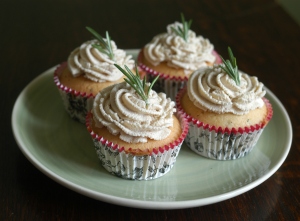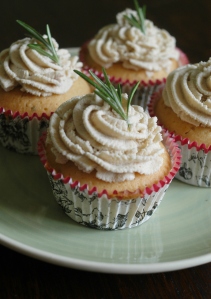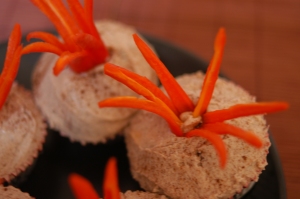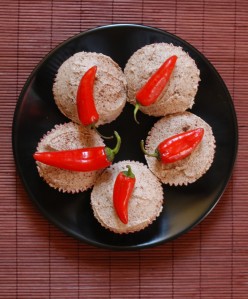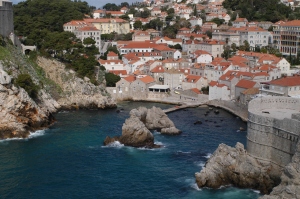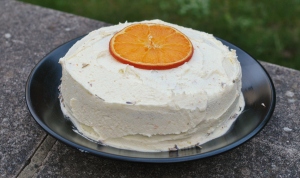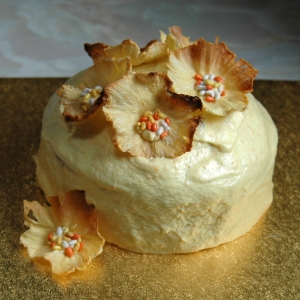Ok, I know that I have already completed a cake for Italy, but I couldn’t resist trying this combination, and my goodness, it works! Loosely based on the Tuscan speciality Castagnaccio, this cake combines the flavours of chestnut, rosemary and olive oil into an intriguingly-delicious flavoured cupcake. The original castagnaccio is a very traditional poor-mans dessert in Italy. Chestnuts have a history of being a crucial food source for the poorer communities of Italy, as the fact that they grew wild meant that anyone could collect and prepare these nuts. The earliest example of castagnaccio can be traced back to Roman times, when they would make a paste from chestnut flour, water and salt and top it with rosemary and pine nuts. Whilst no doubt practical for long marches, I am rather glad they have improved slightly since this point!
The cupcake base is a dense olive oil and rosemary cake, which is topped with a chestnut frosting. Decorated with a sprinkle of chocolate shavings and a sprig of rosemary, these cakes are beautifully rustic, yet classically delicious in their design. Eat these and dream of being in the beautiful tuscan towns, getting the sun that we are missing dreadfully in the grey cloudy country that is England.
Rosemary and Olive Oil Cupcakes with Chestnut Frosting
Ingredients:
- 4 eggs
- 6oz/56g caster sugar
- 158ml olive oil
- 2 tbsp fresh rosemary, finely chopped
- 7.5 oz/225g plain flour
- 1 tsbp baking powder
- 1/2 tsp salt
- 50g chestnut puree
- 100ml double cream
- 10g caster sugar
Instructions:
Preheat the oven to 325°F/160°C/Gas mark 3 and line a cupcake tin with liners. Beat the eggs until foamy and the gradually mix in the sugar. Slowly pour in the olive oil, beating constantly. Add the rosemary, flour, baking powder and salt and mix until well combined. Spoon into the cupcake cases and bake in the oven for 30 minutes until brown and firm to the touch. Remove from the oven and leave to cool completely.
To make the frosting, whip the cream and sugar together until it is holding soft peaks. Add the chestnut puree and mix until well combined. Pipe onto the top of the cupcake and decorate with chocolate shavings and a sprig of fresh rosemary.


